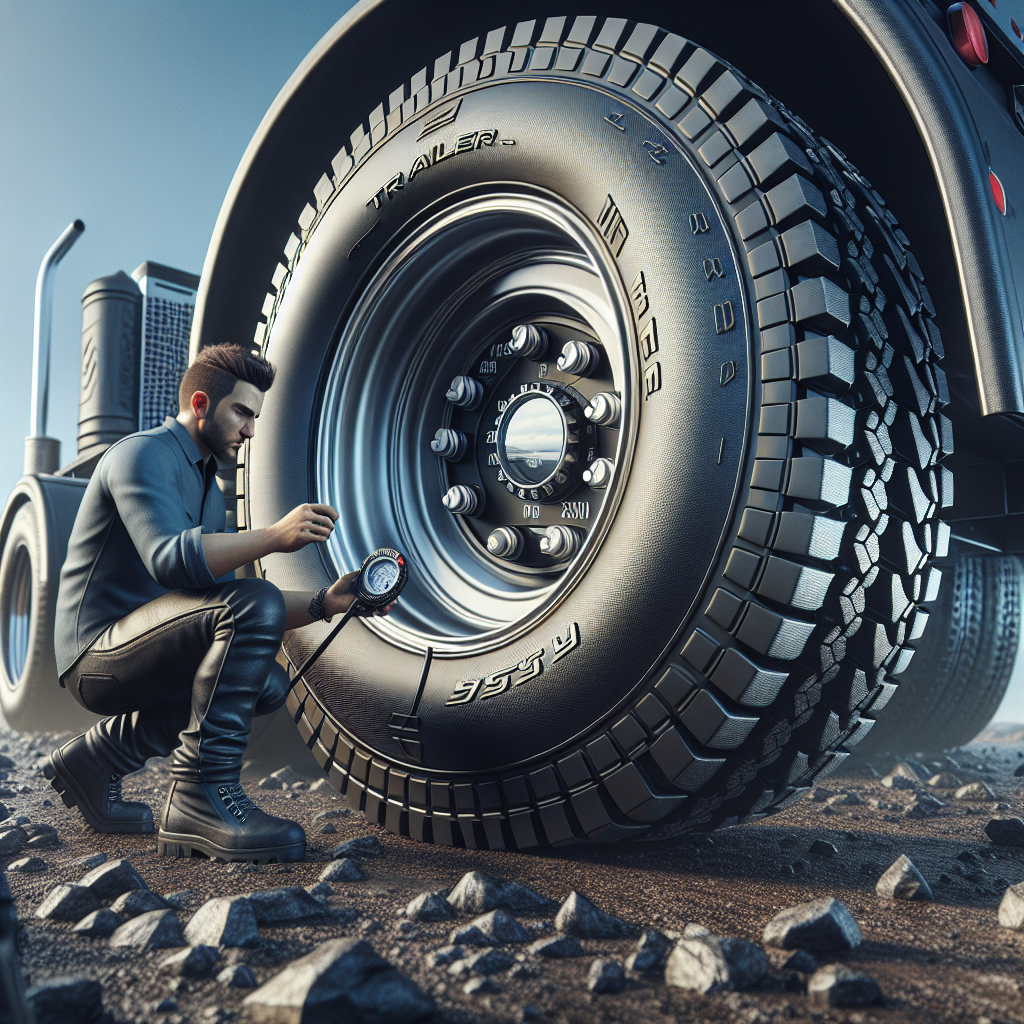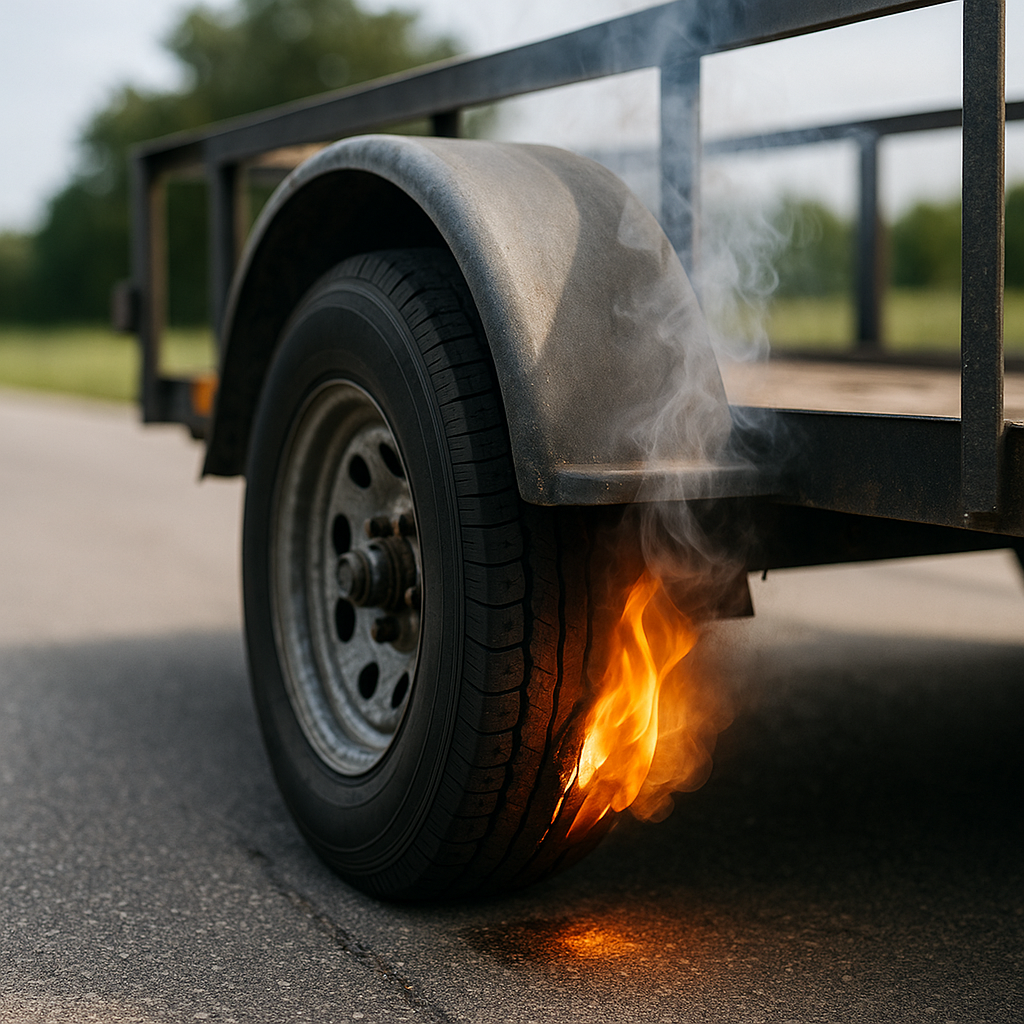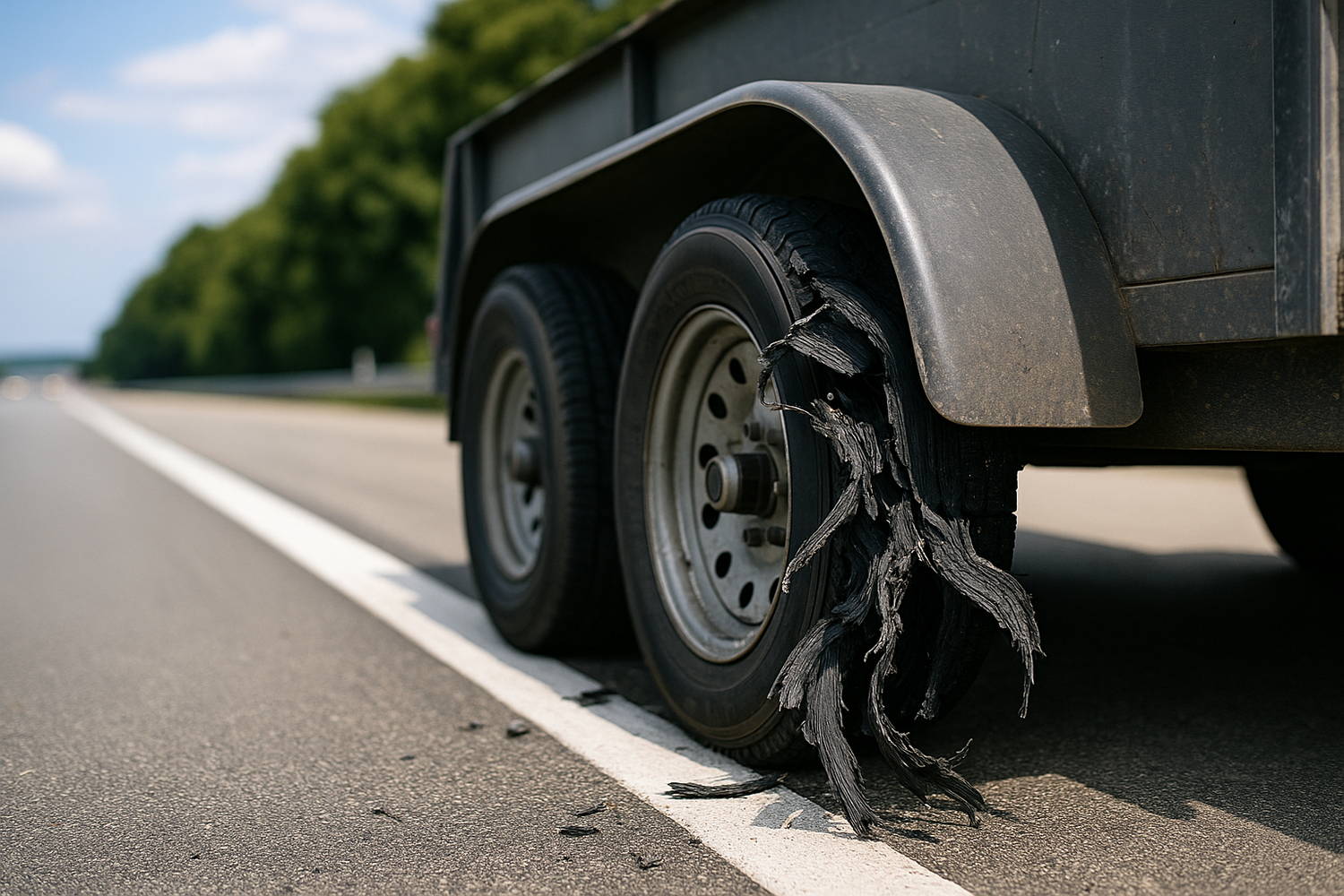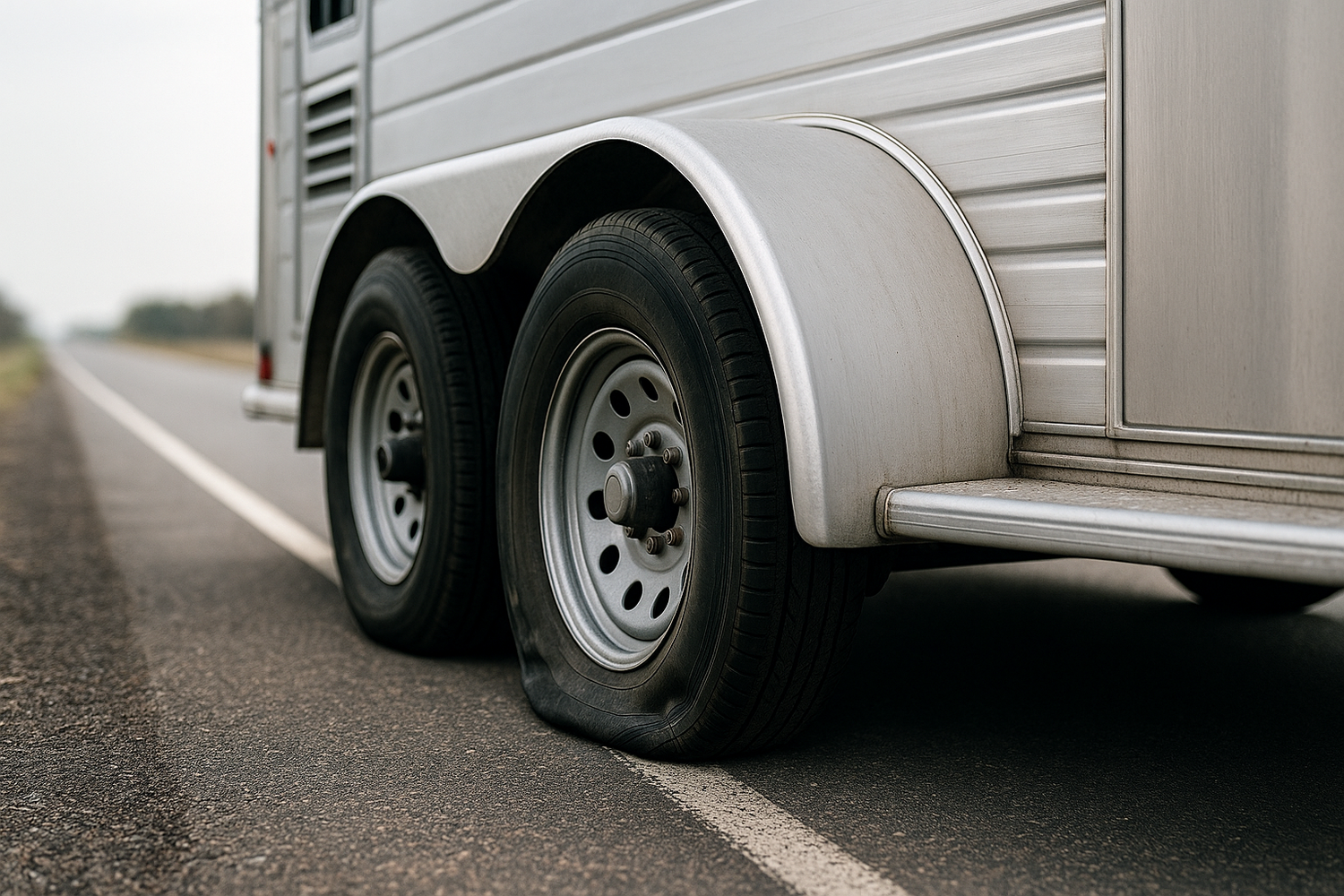Maintaining the correct PSI for your trailer tires is crucial for several reasons. First and foremost, tire pressure directly influences the safety of your vehicle while on the road. Under-inflated tires can lead to reduced traction, increased wear, and a higher risk of blowouts, all of which can result in dangerous driving conditions.
On the flip side, over-inflated tires can cause uneven wear patterns and a harsher ride, compromising both performance and comfort. Therefore, understanding how to gauge and adjust your tire pressure is essential for optimal performance.
Here are some key points to consider regarding tire PSI:
- Safety: Proper tire pressure ensures that your trailer can handle the load effectively, reducing the risk of accidents.
- Fuel Efficiency: Correctly inflated tires improve fuel economy by reducing rolling resistance.
- Tire Longevity: Maintaining the right PSI can extend the lifespan of your tires, saving you money in the long run.
- Performance: The handling and stability of your trailer are significantly affected by tire pressure, which can impact your overall driving experience.
By regularly checking and adjusting your trailer tires' PSI, you are not only ensuring safety but also enhancing performance. Tow with peace of mind, knowing that trailerwatchdog is standing guard.
Factors Influencing Trailer Tire Pressure Needs

Several factors can influence the ideal tire pressure for your trailer, making it essential to understand how these elements interact to determine the appropriate PSI. Each of these factors plays a significant role in ensuring optimal performance and safety on the road.
Here are the key influences on trailer tire pressure needs:
- Load Weight: The weight your trailer carries has a direct impact on tire pressure. Heavier loads typically require higher PSI to maintain stability and prevent excessive tire wear.
- Temperature: Tire pressure can change with temperature fluctuations. As the temperature rises, so does the air pressure within the tire. It’s important to check PSI during varying weather conditions to avoid under or over-inflation.
- Tire Type: Different types of tires (such as radial or bias-ply) have varying requirements for optimal PSI. Refer to the manufacturer specifications for guidance on the right pressure for your specific tires.
- Driving Conditions: The terrain and road conditions can influence tire performance. Off-road or rough terrains may require different tire pressure settings compared to smooth, paved roads.
- Trailer Design: The design and purpose of the trailer can also impact the required tire pressure. Trailers designed for heavy-duty use might necessitate different inflation levels compared to lighter utility trailers.
By considering these factors, trailer owners can make informed decisions about maintaining the correct PSI, ensuring safety and enhancing the longevity of their tires.
Recommended PSI Levels for Different Trailer Types

Understanding the recommended PSI levels for different types of trailers is crucial for maintaining safety and optimal performance on the road. Each trailer type has unique requirements based on its design, load capacity, and intended use. Below are some guidelines for PSI levels according to various trailer categories:
- Utility Trailers: Typically, utility trailers should operate at a PSI range of 50-70 PSI. This ensures stability when carrying tools, equipment, or landscaping materials.
- Camping Trailers: For camping trailers, a recommended PSI of 45-60 PSI is often suitable. This level helps maintain a comfortable ride while supporting the additional weight of gear and supplies.
- Travel Trailers: Travel trailers generally require a PSI between 60-80 PSI. Given the heavier loads they carry, maintaining this pressure is vital for safety and fuel efficiency.
- Horse Trailers: Horse trailers, which can be quite heavy especially when loaded, usually operate best at 50-65 PSI. These levels help ensure the well-being of the animals during transport.
- Boat Trailers: A PSI of 40-60 PSI is typically recommended for boat trailers, taking into account the weight of the boat and the stability needed during transport.
It’s important to note that these PSI levels can vary based on specific manufacturer recommendations and the actual weight of the loads being carried. Regularly checking and adjusting your trailer tire pressure based on these guidelines can significantly enhance safety and performance.
How to Measure and Adjust Tire Pressure

Measuring and adjusting tire pressure is a straightforward process that can greatly impact the safety and performance of your trailer. Here’s a step-by-step guide to help you achieve the correct tire pressure:
- Gather Your Tools: You will need a reliable tire pressure gauge, which can be found at any automotive store, and an air compressor for inflating the tires.
- Check the Recommended PSI: Before measuring, refer to the trailer's manual or the tire sidewall for the manufacturer's recommended PSI levels.
- Measure the Pressure: Remove the valve cap from the tire. Press the tire pressure gauge onto the valve stem to get a reading. Make sure to press firmly for an accurate measurement. Note the PSI reading displayed on the gauge.
- Adjust as Necessary: If the tire pressure is below the recommended level, use the air compressor to inflate the tire until it reaches the specified PSI. If it’s over the recommended level, you can release some air by pressing the pin in the valve stem gently until the desired pressure is achieved.
- Recheck the Pressure: After adjusting, measure the tire pressure again to ensure it meets the recommended level. Repeat the process until you achieve the correct PSI.
- Replace the Valve Cap: Finally, don’t forget to put the valve cap back on to keep dirt and debris out, which can affect the tire's performance.
Regularly checking and adjusting your trailer's tire pressure will not only enhance safety but also optimize fuel efficiency and extend the life of your tires.
Consequences of Incorrect Tire Pressure
Maintaining the correct tire pressure is crucial for the overall performance and safety of your trailer. Failing to do so can lead to a variety of serious consequences:
- Increased Tire Wear: Insufficient tire pressure causes tires to wear unevenly and prematurely. When tires are under-inflated, the outer edges tend to wear down faster, leading to costly replacements.
- Reduced Fuel Efficiency: Under-inflated tires create more rolling resistance, which means your vehicle has to work harder to move. This increased effort results in higher fuel consumption, negatively impacting your overall towing costs.
- Decreased Handling and Stability: Incorrect tire pressure can severely affect your trailer's handling. Under-inflated tires can cause swaying and instability, making it harder to control the trailer, especially during turns or in windy conditions.
- Increased Risk of Blowouts: Over-inflated tires are more prone to blowouts due to excessive pressure. A blowout can lead to loss of control, posing a serious danger to you and other road users.
- Heat Buildup: Both under-inflated and over-inflated tires can generate excessive heat as they roll. This heat buildup can lead to tire failure, increasing the risk of accidents on the road.
- Compromised Safety: Ultimately, incorrect tire pressure compromises the safety of both the trailer and the towing vehicle. Ensuring that your tires are properly inflated is essential to keeping you and your cargo safe during travel.
By regularly monitoring and adjusting your trailer's tire pressure, you can avoid these severe consequences and ensure a smoother, safer towing experience.
Maintaining Safe Tires for Long Trips

Ensuring your trailer tires are safe and ready for long trips requires diligent maintenance and regular checks. Here are some essential tips for maintaining safe tires:
- Regular Pressure Checks: Make it a habit to check your tire pressure before every trip. Utilize a reliable tire pressure gauge and ensure that all tires, including spares, are inflated to the manufacturer-recommended PSI.
- Inspect Tread Depth: Worn-out tires can compromise safety. Use the penny test or a tread depth gauge to ensure your tires have adequate tread. If the tread is too shallow, consider replacing your tires.
- Look for Visible Damage: Before hitting the road, inspect your tires for any signs of damage, such as cracks, bulges, or foreign objects lodged in the tread. Any visible issues should be addressed immediately.
- Rotate Your Tires: To promote even wear, rotate your tires periodically as per your vehicle's guidelines. This practice can extend the lifespan of your tires and enhance performance.
- Monitor Load Capacity: Understand the weight your trailer can safely carry and ensure that you are not exceeding the load limit. Overloading can lead to increased tire wear and potential blowouts.
By implementing these maintenance practices, you can significantly improve the safety and longevity of your trailer tires, making your long trips more enjoyable and worry-free. Tow with peace of mind, knowing that trailerwatchdog is standing guard.








